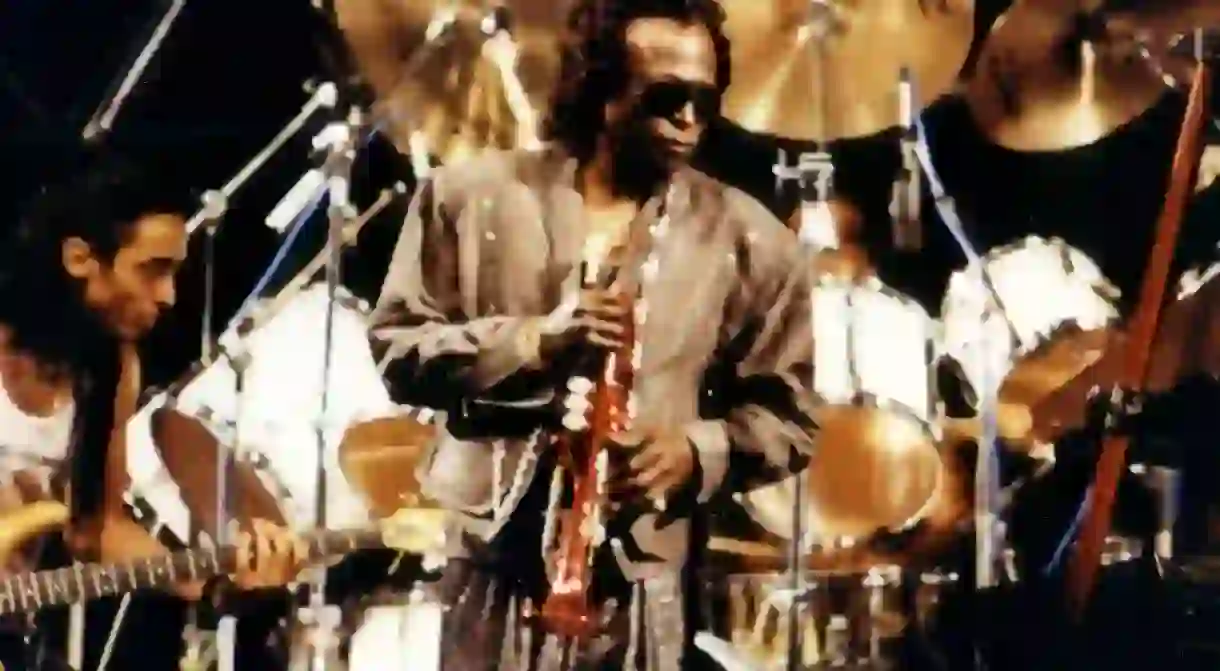An Introduction To Miles Davis In 5 Songs

With a career spanning over 40 years, Miles Davis was an absolutely vital presence in the world of modern jazz throughout the 1950s all the way up to his death in the 1990s. Using a trumpet, a brilliant musical mind, and some insanely talented friends, Davis pushed the boundaries and capacities of jazz during decades defined by sociopolitical inequality, hyper-commercialization and cultural co-optation, and in the process preserved the legacy of America’s most intellectual and progressive musical forms. As such, it’s only natural that we dedicate some lines to introducing how inconceivably cool Miles Davis truly was.
A Night In Tunisia (1955)
This song truly highlights Davis’ more intense side. Full of noodling guitars hooks, sax solos and urgent drumming, A Night in Tunisia leaves no room to breathe, and that’s the best part about this piece. Even the piano sounds dark and uncomfortable, and the gritty recording quality really seals the song’s demanding atmosphere.
Bye Bye Blackbird (1957)
Jazz certainly has a large spectrum of style (largely thanks to artists like Davis), but this song is possibly the closest he has ever come to a lounge sound. With hints of bossa nova in the key and bass line, Davis plays a strolling muted trumpet solo over most of the song’s length, and the song gains a cool, almost cinematic quality thanks to it. Until of course, things pick up with the saxophone solo and remind us all that no piece by the inventor of cool is ever that simple.
Milestones (1958)
Davis’ work has a hefty number of slower jams and experimental works, but Milestones was a crucial piece to changing up the pace and widening his creative breadth. Contrary to even all of the other works on this list alone, Milestones is practically in double time the whole way through and every part of the instrumentation is bold, well-thought out and elegant. Match a song like this with any other style of music at the time of its release in the late 1950s, and nothing will compare.
So What (1959)
This song undoubtedly deserves all of the recognition in the world; there’s something about that opening horn-bass call and response that is simply unforgettable. Regardless of its 1959 release, So What and the rest of Kind of Blue grip the listener in the most unique and unprecedented way. Even the most laid back swing number still demands all attention for the virtuosic soloing that sprawls across the wonderful rhythm. With musicianship this good, it doesn’t matter how much time it takes to listen Davis’ work.
Spanish Key (1970)
Even in a musical career as dense and groundbreaking as Miles Davis’, Spanish Key is easily one of the grandest concoctions ever spawned from this modern musical genius’s mind. Employing a staggeringly large array of different sounds throughout its impressive 17 minutes, his band runs through everything from bongos over big band horn leads, experimental funk guitar and saxophone, and Afro-Cuban rhythmic patterns simultaneously. It’s really an incredible sound to listen in on; the way that so many varied sounds come together in such an outstandingly engaging amalgamation and even reinterpretation of progressive jazz never ceases to amaze.













